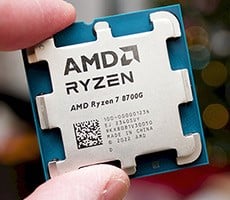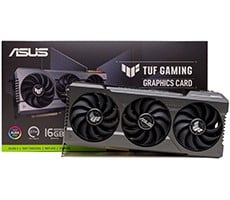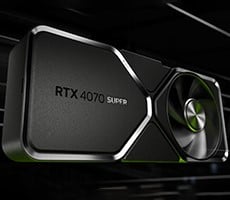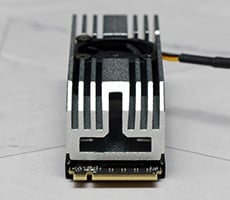Ryzen 7 8700G & Ryzen 5 8600G Review: AMD Zen 4 With A Potent Radeon GPU
UL 3DMark CPU Physics Benchmark
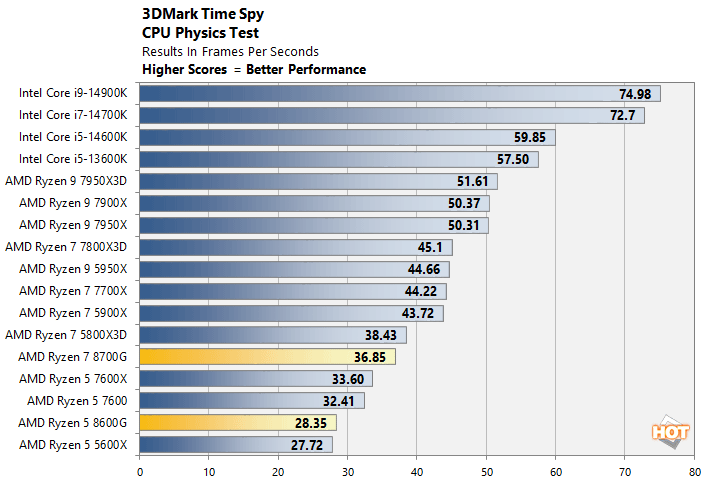
Thankfully, we're at the last of the CPU-focused benchmarks; things have been somewhat repetitive up to this point. Based on thier specifications, it was somewhat easy to predict where the AMD Ryzen 5 8600G and Ryzen 7 8700G would land in the ranking, and the numbers weren't unexpected. Once agian, we see the two Rzyen 8000G series processors we tested remaining competitive with similar core count Ryzen processors.
AMD Ryzen 8000G Radeon iGPU Graphics Benchmarks
While all of the elements in the AMD Ryzen 8000G series are known quantities -- we've tested Zen 4 and the Radeon iGPU numerous times in the past -- putting all of these elements in a desktop chips, that isn't nearly as constrained by power or thermals is new.As we mentioned earlier, the Ryzen 5 8600G features an integrated Radeon 760M GPU with 8 Compute Units (CUs) that can boost up to 2,800MHz, while the Ryzen 7 8700G features an integrated Radeon 780M GPU wtih 12 CUs that can boost up to 2,900MHz. And both obviously share system memory with the CPUs, so memory bandwidth is limited by the speed of the DDR5 memory attached to the system. In a dual-channel setup, without overclocking, the Ryzen 5 8600G and Ryzen 7 8700G officially support memory speeds upp to 5,200MT/s, though much higher memory clocks are possible with EXPO / overclocking. And higher clocked system memory with have a significant impact on integrated graphics performance. With that in mine, we tested the Ryzen 7 8700G in a couple of configurations -- first, at its highest officially supported memory frequency (DDR5-5200) and again with the aggressive EXPO profile available with the G-SKILL kit used in the test system (DDR5-6400). As you peruse the results, keep in mind that iGPU performance would scale even further with an even faster memory kit...

We've got a very different mix of systems in the chart above, including notebooks, small form factor systems, and even handheld PC gaming devices, to show an array of integrated and discrete graphics options. As you can see, in 3DMark Night Raid, the Radeon 760M in the Ryzen 5 8600G performs about on-par with the Radeon 680M and GeForce RTX 1650 Max-Q, depending on the system configuration. The additional CUs and higher clock of the Radeon 780M in the Ryzen 7 8700G, however, pushes its performance significantly higher and it's essentially in-line with the gaming-focused Ryzen Z1 Extreme in the ROG Ally. Crank the system memory clock to DDR5-6400 though, and the Radeon 780M is able to stretch its legs and clearly outperform any integrated graphics solutions we've tested to date. It even outruns some discrete solutions.
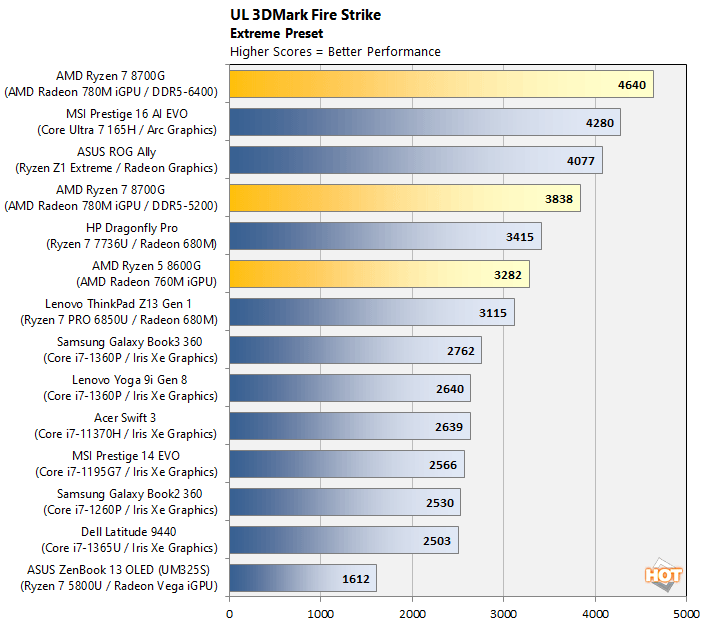
Before today, the Arc graphics engine in Meteor Lake had put up the highest score we've seen from an iGPU in this more demanding graphics benchmark. Technically that would still be the case, if we had tested the Ryzen 7 8700G solely in its stock configuration. As we saw in Night Raid, the Radeon 760M remained competitive with the Radeon 680M here, but the Radeon 780M in the Ryzen 7 8700G offers significantly more performance. Pair the Ryzen 7 8700G with faster memory, and again, it tops the charts.
AMD Ryzen 8000G Radeon iGPU Gaming Benchmarks
We've got some reference data in some actual games with a wide arry of integrated graphics solutions as well. For these next couple of tests, we used Middle Earth: Shadow Of War and Gears Tactics, both running at 1080p, but we varied the in-game image quality settings with Gears.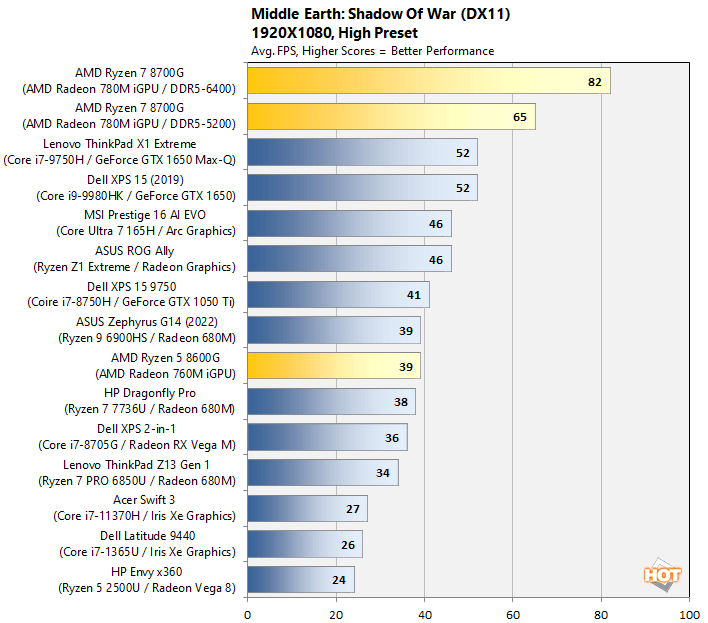
The additional CUs, higher frequency, and increased CPU performance give the Ryzen 7 8700G and its Radeon 780M a clear advantage over the Ryzen 5 8600G and Radeon 760M in this game. That said, the Radeon 760M continues to battle it out with the Radeon 680M, which itself performs about on-par with a discrete GeForce RTX 1050 Ti. The Radeon 780M in the Ryzen 7 8700G shoots to the top of the charts, especially when paired to high performance memory.
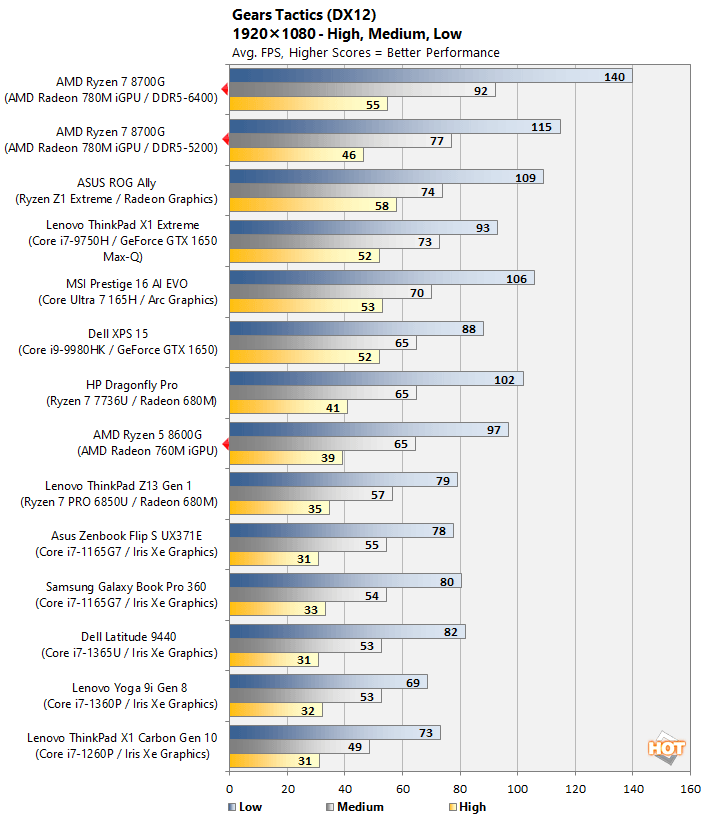
Depending on the level in-game detail being used, the ranking change somewhat, but overall the story is much the same. The Radeon 760M is a relatively powerful iGPU, but Radeon 780M in the Ryzen 7 8700G rules the roost. With "stock" memory, the 780M and Meteor Lake's Arc graphics trade blows. Attach faster memory though, and the Radeon 780M's performance jumps up significantly. Of course, attaching faster memory to any platform will help iGPU performance, but at this point in time there's no faster iGPU for desktop systems than the Radeon 780M.
While we didn't test it here, we should also point out that the Radeon GPUs in the Ryzen 5 8600G and Ryzen 7 8700G will support FSR and AMD's Fluid-Motion-Frames, frame generation tech. Both of those technologies will further increase performance in compatible games.


